Tom's Guide Verdict
The MCHOSE GX87 is an astounding mechanical keyboard for the money. It’s built like a tank, is highly customizable and compatible with VIA software. Its thocky sound is addictive, and it’s a dream to type on. Oh, and it packs a humungous 8,000mAh battery. Its flaws are all minor: it isn’t the most exciting to look at, its gasket mount is rather firm and there are only two switches to choose from. But don’t let any of that put you off buying the GX87.
Pros
- +
Excellent, customizable build
- +
Sounds incredible
- +
8,000mAh battery
- +
Runs QMK/VIA
- +
Cheap
Cons
- -
Mundane-ish styling
- -
Firm-ish gasket
- -
Limited stock switch choice
Why you can trust Tom's Guide
The MCHOSE GX87 is a custom mechanical keyboard sporting an 80% TKL layout. Ever heard of MCHOSE? Me neither, until they sent us the GX87 and MCHOSE X75 V2 (which we gave a glowing review).
The shouty, all-caps styling doesn’t lend any clues as to the correct pronunciation of MCHOSE. Is it Mc-Hose? M-Chose? M.C. Hose? I have no idea either, but my favorite is M.C. Hose. I’ve been asked by the brand’s representatives to refer to it as “MCHOSE” and “MCHOSE” only. So be it: if they want me to shout, I’ll shout.
Anyway, is this board any good? Well, yes actually, it is. And I’ll admit that surprised me. The manufacturer’s silly name and lack of rep initially had me thinking the GX87 was just another crappy AliExpress special. Happily, I stand proven wrong.
The GX87 is a beautifully built, wonderful-sounding mechanical deck that’s glorious to type on. It’s highly customizable, too, and even has a nifty trick up its sleeve in that regard. It packs a whopper of a battery and costs nearly half of similarly-specced premium TKLs — all without any significant drawbacks.
Could this be one of the best mechanical keyboards for enthusiasts on a budget? I think so. Find out more in my full MCHOSE GX87 review.
MCHOSE GX87 review: Cheat sheet
- What is it? An 80% custom mechanical keyboard from Scottish hosepipe manufac– I mean Chinese keyboard manufacturer MCHOSE
- MCwhatnow? No idea
- What does it cost? It starts at $109 from MCHOSE, which is exceptionally good value given the performance
- What’s good? Lots. Great build quality, wonderful typing and sound, a lift-off top plate and QMK/VIA configuration
- What isn’t? Very little: mundane-ish styling and firm-ish gasket mounting, but nothing that ought to dissuade you from buying the GX87
MCHOSE GX87 review: Specs
Price | |
Switches | Vintage White (linear); Matcha Latte V2 (linear) |
Layout | 80% TKL, 88-key |
Mount type | Gasket |
Stabillizers | Plate-mounted, clip-in |
Keycap material | Double-shot PBT |
Case material | Aluminum |
OS' supported | Windows, macOS, Linux |
Connectivity | Bluetooth / 2.4G / Wired |
Polling rate | 1,000Hz |
Battery | 8,000mAh |
Size | 14.1 x 5.47 x 1.4 inches |
Weight | 4.5lbs |
MCHOSE GX87 review: The ups
There’s so much to love about the MCHOSE GX87. It’s built like a tank, types well and, best of all, sounds incredible. Not enough? How about 1,000Hz polling and an 8,000mAh battery, too!
YOUNG’S CHOICE!
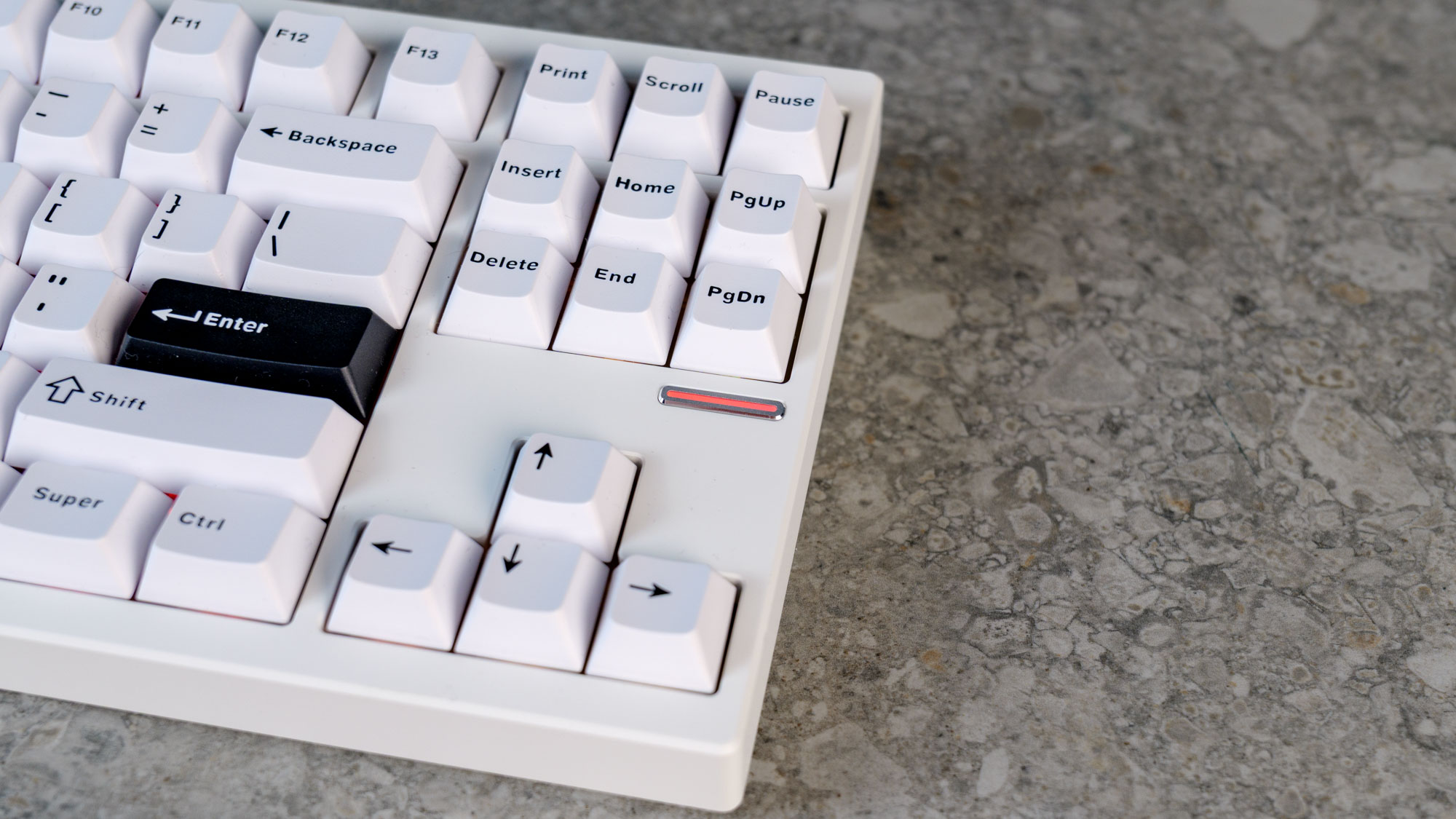
If the MCHOSE name wasn’t confusing enough, the brand’s similarly-capitalized catchphrase will solidify the bamboozle: “YOUNG’S CHOICE.” Here in Britain, at least, it’s the kind of motto one would usually see bannered across a pack of frozen haddock. Or a sachet of cat food. There’s something fishy going on.
Reading between the lines of the MCHOSE website’s hilariously poor Chinese-to-English direct translations, it seems that “YOUNG’S CHOICE” signifies “youthful design”.
I guess youthfulness implies freshness; something different, something new. But in that case, there’s nothing particularly youthful about the GX87’s design. In fact, it’s relatively sober. Aluminum top and bottom cases with squared-off edges — cubism matched pound-for-pound by blocky Cherry-profile keycaps. A few interesting colorways can be had, sure, but nothing avant garde.
Now, that’s not to say the GX87 is an ugly keyboard — far from it — but compared to rivals like the NuPhy Kick75, Gravastar Mercury K1 Pro or even the Redragon K686 Pro SE waifu board, I’d label the GX87’s design “sensible”.
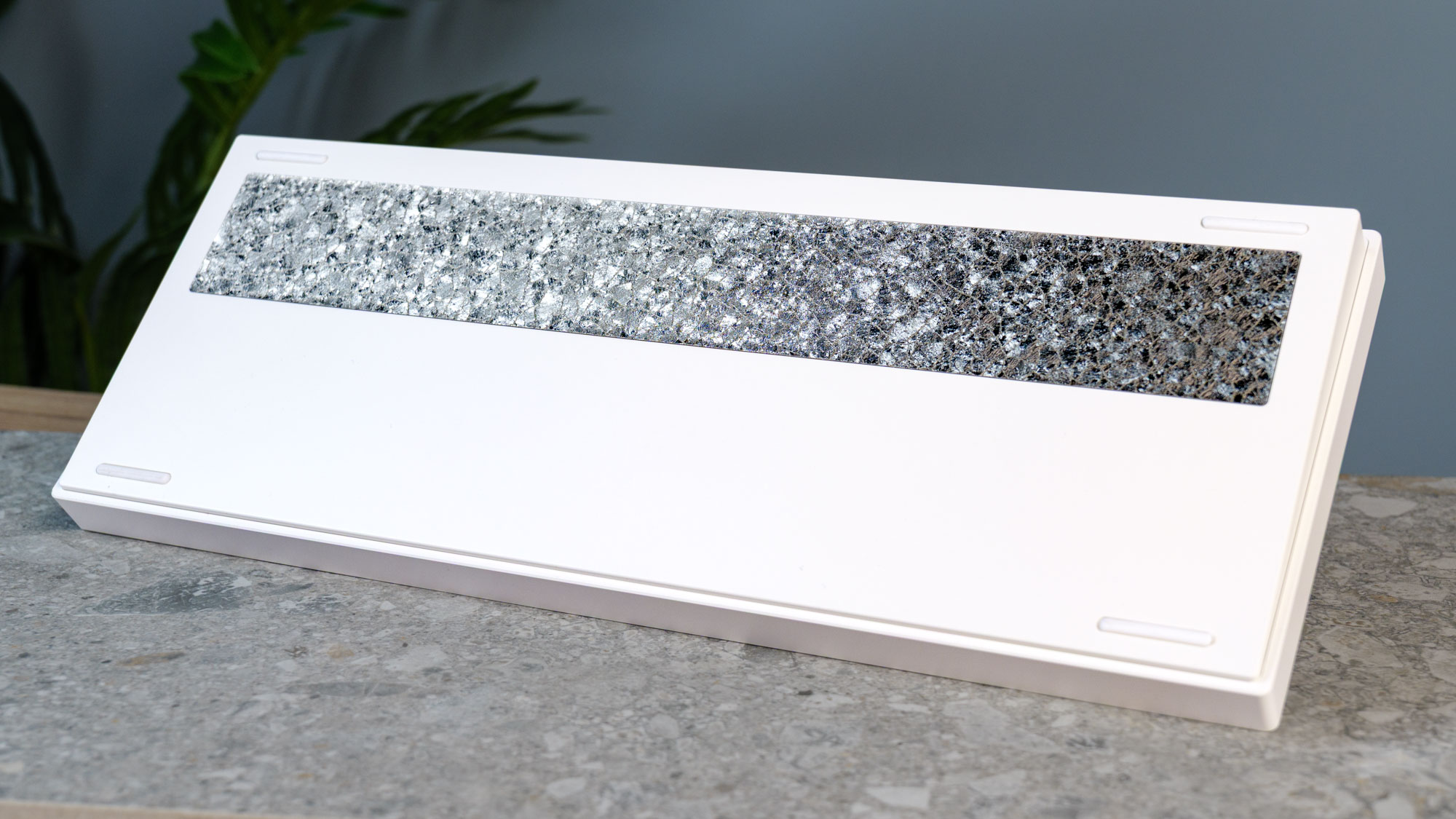
All that sounds pretty negative, but it isn’t. Like I said, this isn’t an awful-looking board by any stretch, and in fact, its pared-back design fits in pretty well in an office environment (“what do you mean my waifu board is inappropriate?”).
There’s also the fact that some people, like me, just enjoy a simpler design — even for my gaming setup where anything flies (including waifus). Low-key looks also lend themselves well as a neutral base to facilitate future customization. And that’ll be important later on.
The GX87’s build bears strong resemblance to the myriad metal 80% TKLs available on Amazon, including the Chilkey NDTKL, to whom the resemblance is uncanny. If I were a betting man, I’d happily wager the two models were machined at the same Shenzhen premises. Not an issue; simply interesting.
That thickness, though
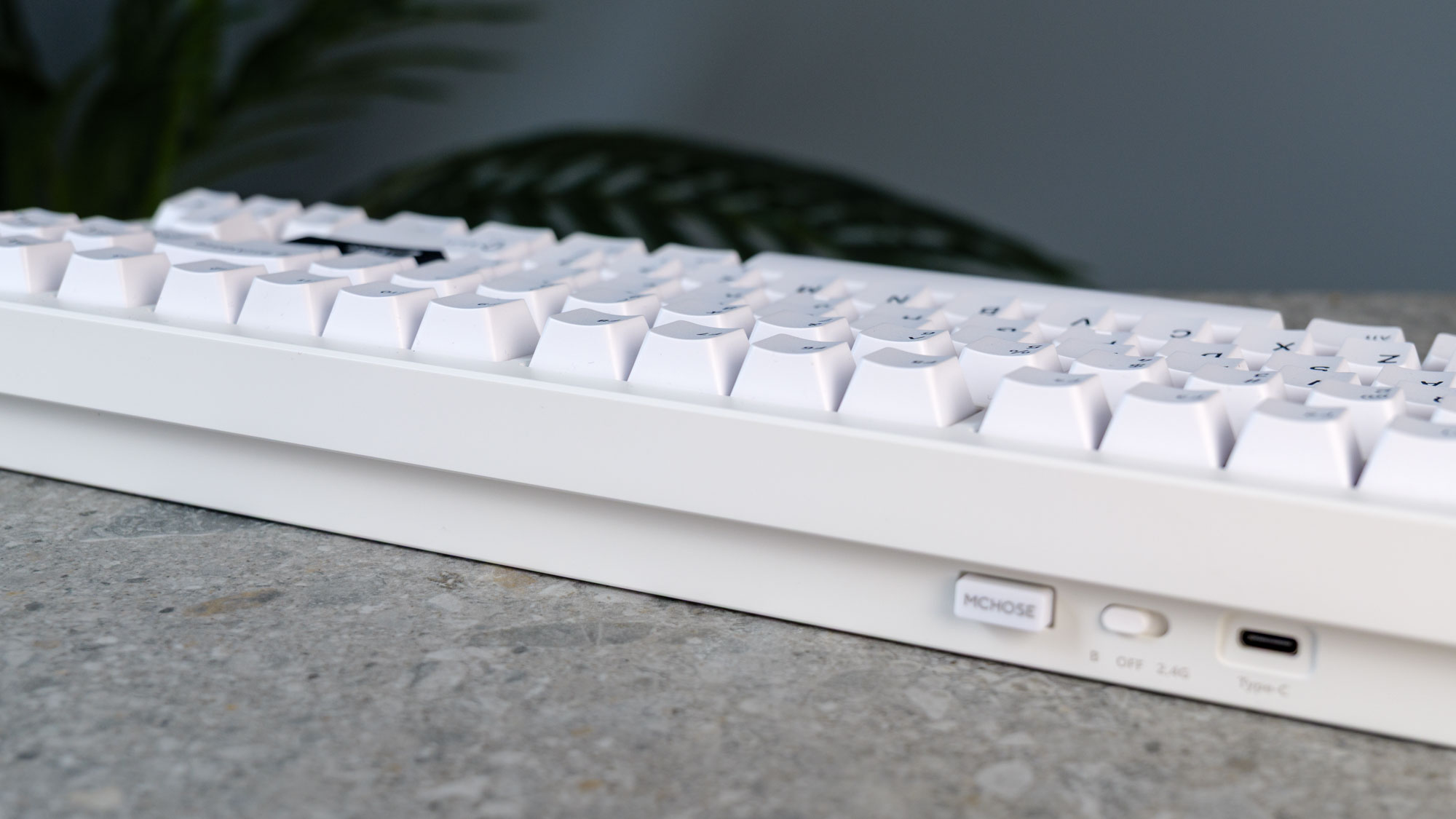
What cannot be disputed is the MCHOSE GX87’s build quality. There’s no flex, there are no rattles, and no QC issues visible whatsoever. And with its solid aluminum case and doubleshot PBT keycaps, the GX87 is built to last.
The counterpoint to the GX87’s build is its weight. At 4.5lbs, it’s tied in thickness with the beasty Keychron Q3 Max. This reaps benefits to sound and stability, but you’ll not want to cart it to and from the office.
Plenty of thock
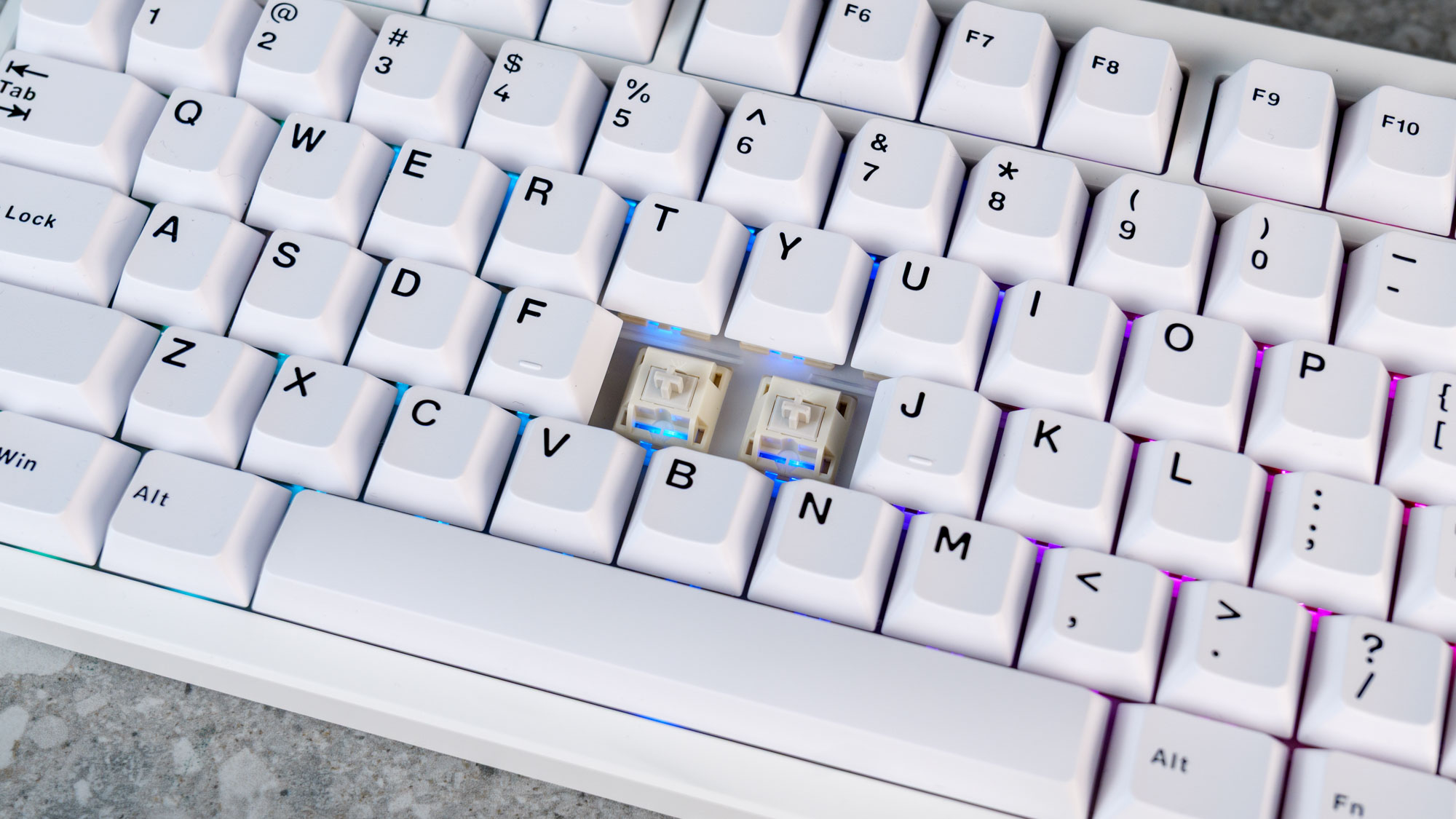
The MCHOSE GX87’s thick is matched only by its thock. As much as I hate the term, this board sounds truly “creamy,” with a muted thocky sound. These enviable acoustics stem from two hefty Poron foam insulating pads, a thinner layer of IXPE foam and two layers of PET plastic — all of which reduce metallic pings.
There’s the polycarbonate plate, too, to curtail metallic “clack” sounds as the keycaps bottom out on the plate. And thocky sounding linear “Vintage White” switches, which I’ll get into more in the section below.
Honestly, the sound is addictive, especially the Space bar. I’d go as far as saying this is the best sounding stock keyboard I’ve ever heard. Even better than the NuPhy Halo75 V2 (although only just).
And all this is with no modifications whatsoever. If you’re after a thocky board straight out of the box, this is it.
Type away
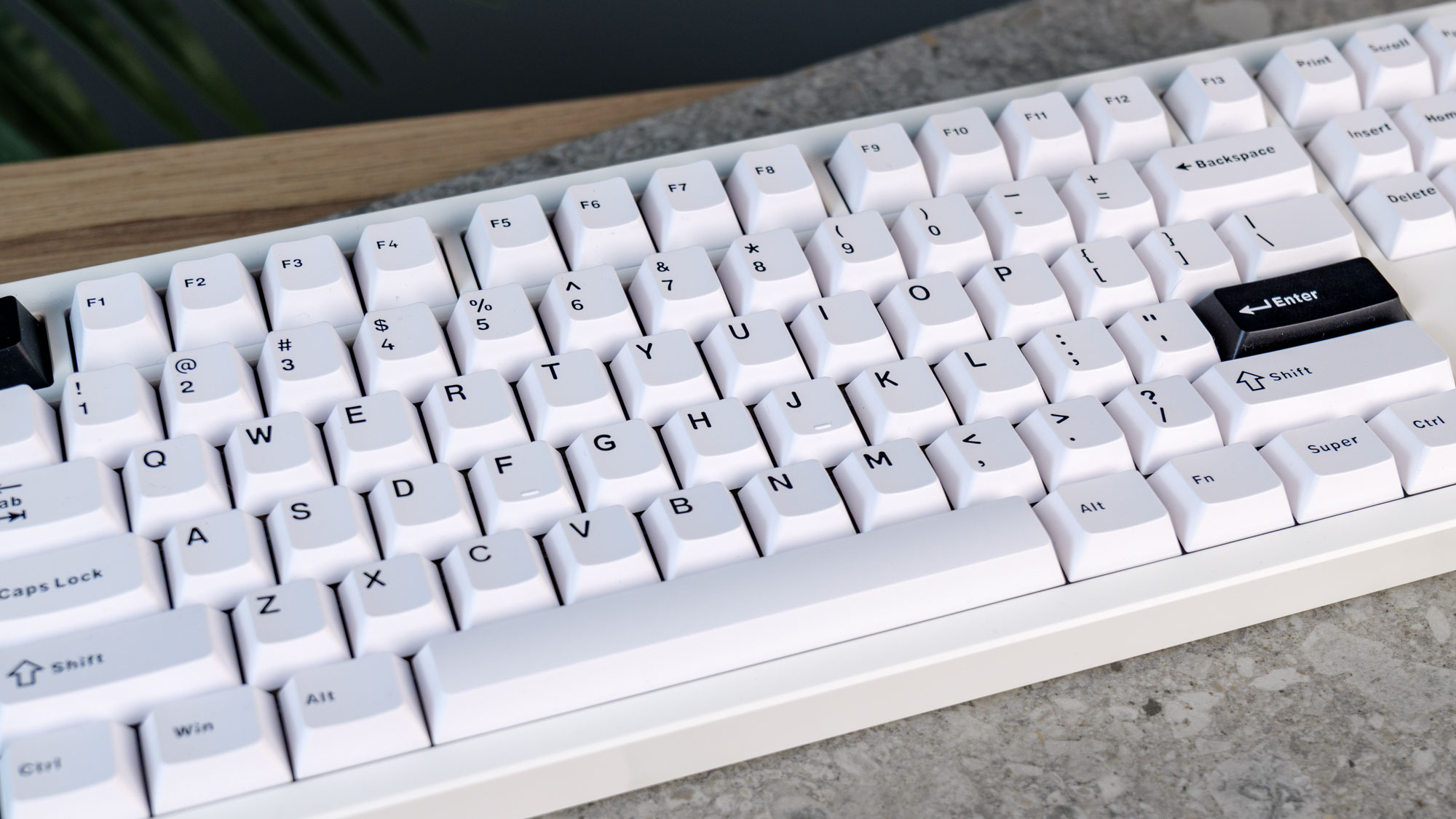
There’s bite to match the bark, too: the GX87 is a joy to type on. It isn't fastest, but it feels great.
The Vintage White pre-lubed linear switches I tested are glorious. They’re slightly heavier than my usual preference, at 45g operating force, but are nicely sprung, so bouncy and satisfying in use without feeling too firm.
Cherry profile keycaps are, again, not my usual preference for typing — I usually prefer a rounded keycap with a deeper concave center. But Cherry works just fine in this setup: they’re nice and low for a standard profile, reducing mis-types and improving type accuracy at speed.
Keyboard | Switch type | Words per minute | Typing accuracy |
|---|---|---|---|
MCHOSE GX87 | Mechanical | 92 | 85.85% |
Mechanical | 90 | 88.21% | |
Mechanical | 92 | 84.53% | |
Mechanical | 96 | 92.82% | |
Mechanical | 95 | 81.79% | |
Mechanical | 98 | 92.31% | |
Mechanical | 99 | 82.91% | |
Mechanical | 94 | 81.80% | |
Mechanical | 84 | 83.00% | |
Mechanical | 96 | 87.55% | |
Chilkey ND75 | Mechanical | 99 | 85.89% |
Pete’s rolling averages (all keyboards) | — | 93.75 | 87.28% |
This isn’t a particularly soft board to type on, though, given it uses a gasket-mounted PCB — usually employed for a softer, bouncier type feel. The two thick foam damping pads take up so much room that there’s very little vertical space for the PCB to move and cushion impacts.
I say “relatively” as it’s still much softer than a top or plate-mounted PCB setup. Besides, I can live with the firmer ride if that’s what it takes to get acoustics this good.
For the epitome of soft gasket mounting, you’ll want the bouncy Keychron P1 Pro (administer your wallet its last rites now).
Get modding
The MCHOSE GX87 is super easy to customize thanks to a magnetic top case, which can be pulled off quickly and easily. No tools are needed to open up the case and start tinkering.
It’s hot swappable, too, so you can fit your favorite mechanical switches without needing to reach for the soldering iron.
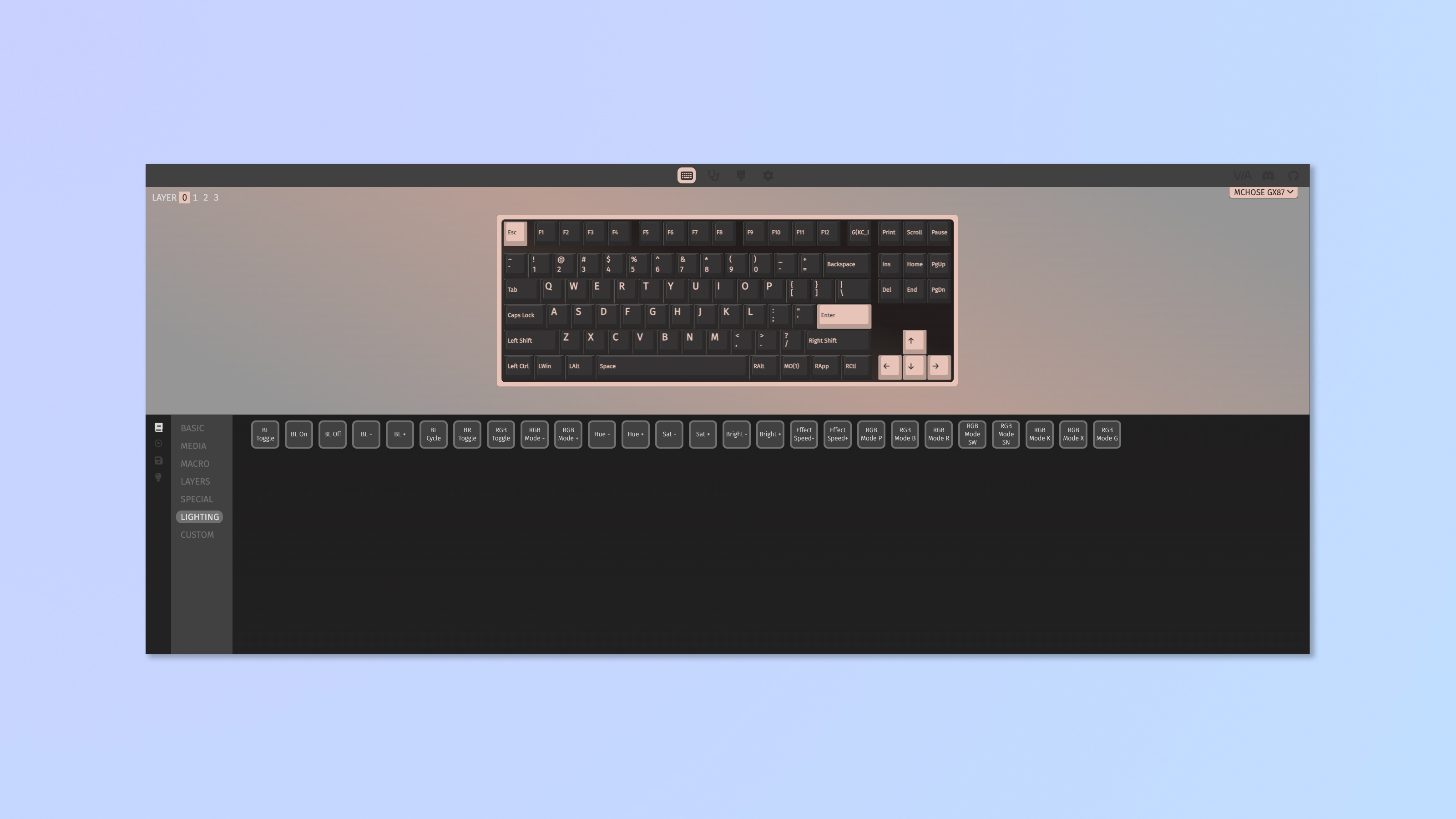
Both of these are features you’ll find in the Chilkey NDTKL, too. However, where the GX87 keyboard has a serious leg up over the Chilkey is its firmware. This board runs open-source QMK firmware, which can be remapped using the VIA web app.
Now, I’ve mildly criticized VIA in the past. And I stand by it. It’s kind of basic and ugly compared to some of the more advanced QMK software out there at the moment, like Keychron’s Launcher software.
That said, VIA is leagues ahead of a lot of terrible proprietary companion software from the likes of Chilkey and Epomaker. You can quickly and easily remap keys, tweak lighting and set macros. Simple but effective.
Get gaming too
It’s important to remember the GX87 isn’t a gaming deck, so it’s a little unfair to compare it to today’s elite crop of Hall Effect monsters like the Lemokey L5 HE or Wooting 80HE — my two daily drivers for gaming.
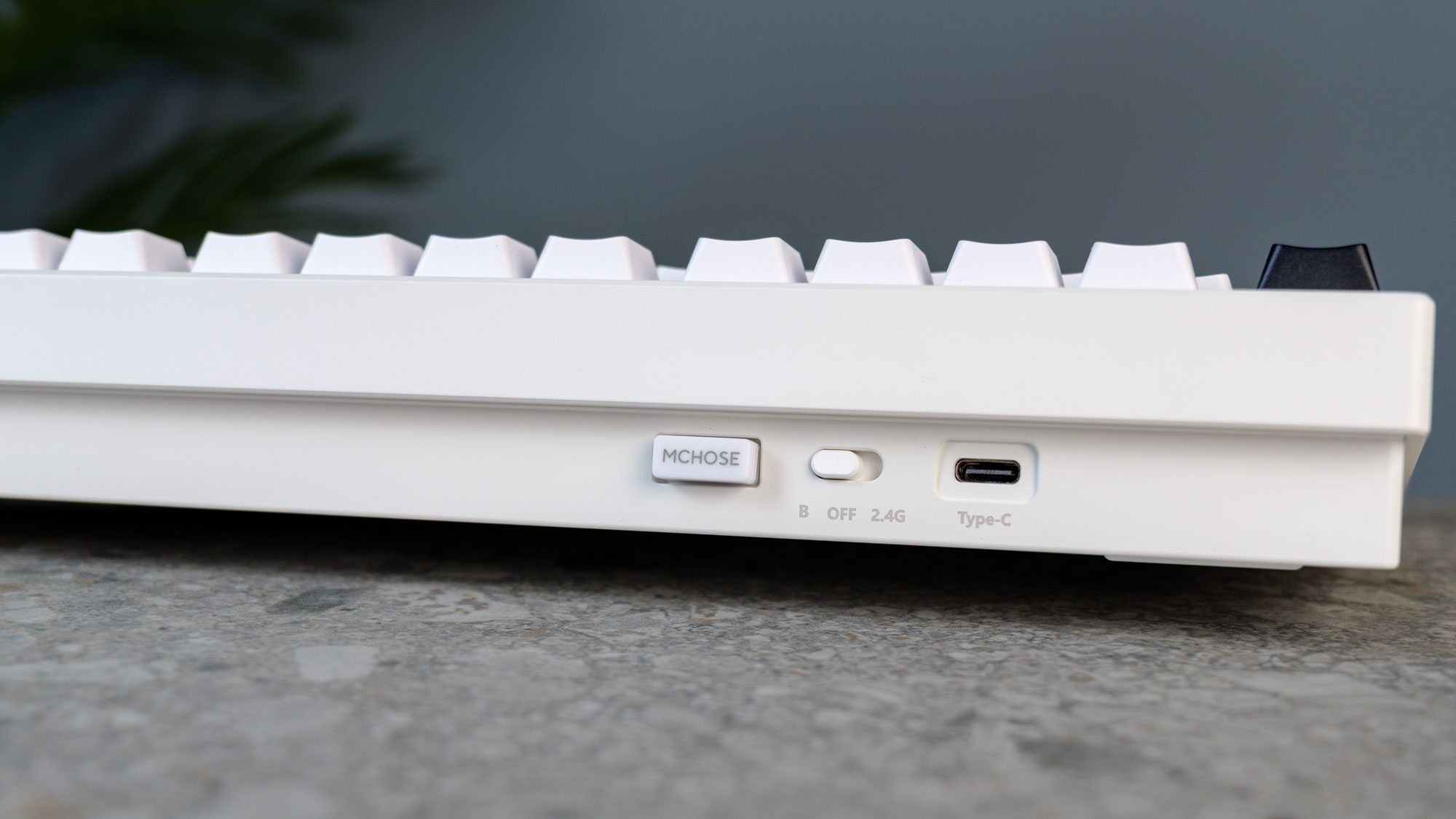
That said, the GX87 will play just fine, so if you’re after a hybrid productivity/gaming deck, it’ll work. It polls at 1,000Hz to reduce latency issues and missed inputs; its Cherry profile keycaps are nice and low to increase keypress accuracy, and the switches are fairly responsive. I had no issues playing my usual first-person games, like Isonzo and Counter-Strike 2.
If I were to game on the GX87 long-term, I’d likely swap out to some sharper switches for more responsive gameplay — once you’re used to super snappy magnetics switches, standard mechanicals can feel a bit slow. But for casual gaming, the Vintage Whites are just fine.
Do bear in mind once more, however, that the GX87 weighs 4.5lbs, and is a chunky TKL layout. Both make it tricky to move around a desk if, like me, you prefer to have your keyboard positioned far out on the left. If these will be an issue, consider a smaller board like the Keychron K2 HE or NuPhy Air60 HE.
8,000mAh (yes, eight THOUSAND) battery
In battery terms, the MCHOSE GX87 is endowed like an Ivy League university. That is to say: pretty darn well. With an 8,000mAh battery, this thing goes forever.
By contrast, the Chilkey NDTKL sports two 1,800mAh cells, while most Keychron decks pack 4,000mAh batteries.
In testing, I haven’t actually run out of charge yet. It’s hard to comment specifically then on the precise longevity one can expect from the GX87, but safe to say, it’s a lot.
Show me the money
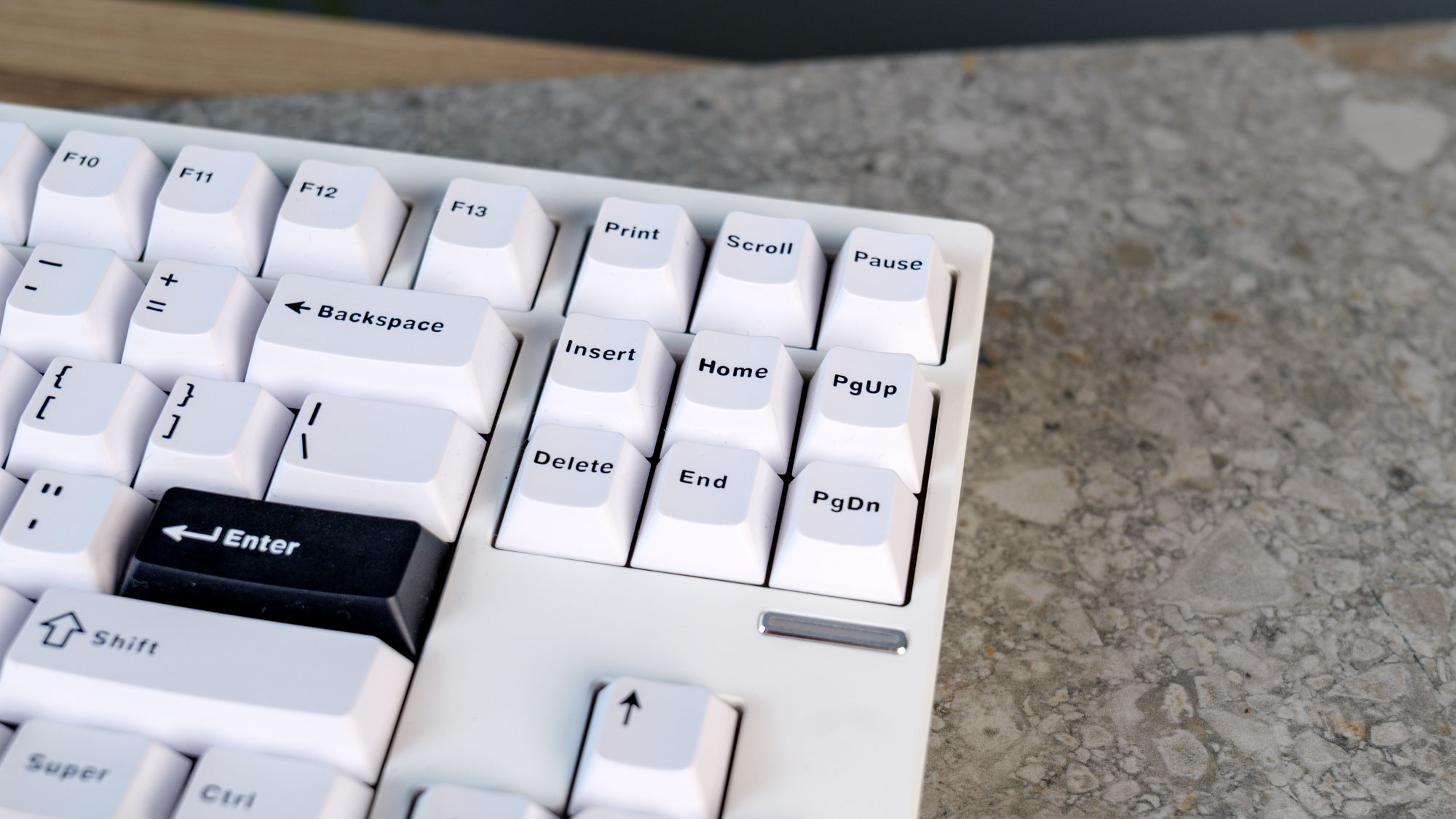
The MCHOSE GX87 costs $109. Need I say more?
Well, I will. $109 is cheap for a keyboard of this caliber. There really isn’t much separating this deck from the much pricier Keychron Q3 Max, and that board sounds nowhere near as good.
In short, the GX87 is phenomenal value for money. Et voilá: ‘Nuff said.
MCHOSE GX87 review: The downs
The issues are only minor. I’ve already mentioned the slightly firm gasket mount and relatively mundane looks, but these are very small bones to pick. I’ll cover the limited switch choices below, but you can still go ahead and buy this keyboard.
Please sir, can I have some more?
The MCHOSE GX87 can be purchased with one of two switch choices at checkout. Both linear, and very similar in operation, except for their max/min operating forces. There are no tactile options. No clicky options either, although if you want those, I’d recommend spending the $109 elsewhere.
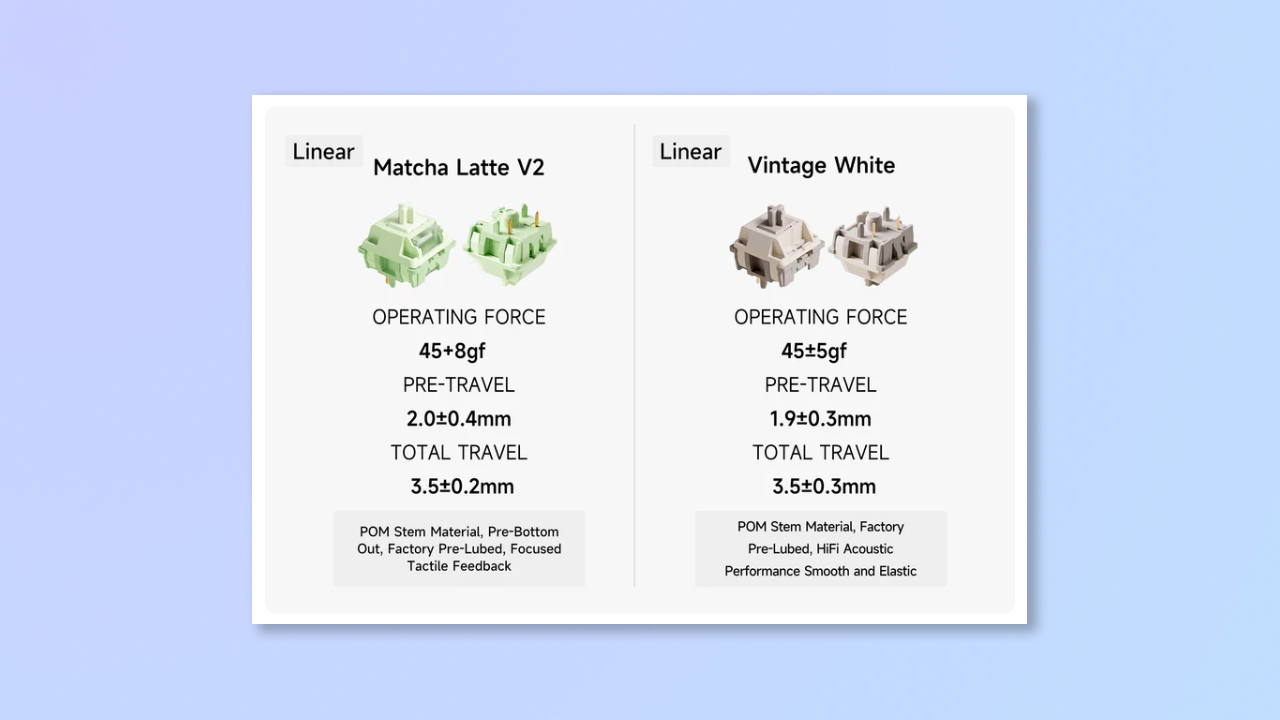
This is far from a major issue, given the GX87 is hot swappable. But more choice at checkout is objectively better.
Buy a NuPhy keyboard, and you’ll almost always have the choice of five or six switches. Even Keychron usually offers at least three (even if they are always the same). As a tactile fan, it would’ve been nice to see a panda-style tactile switch to maximize the thockiness.
MCHOSE GX87 review: Verdict
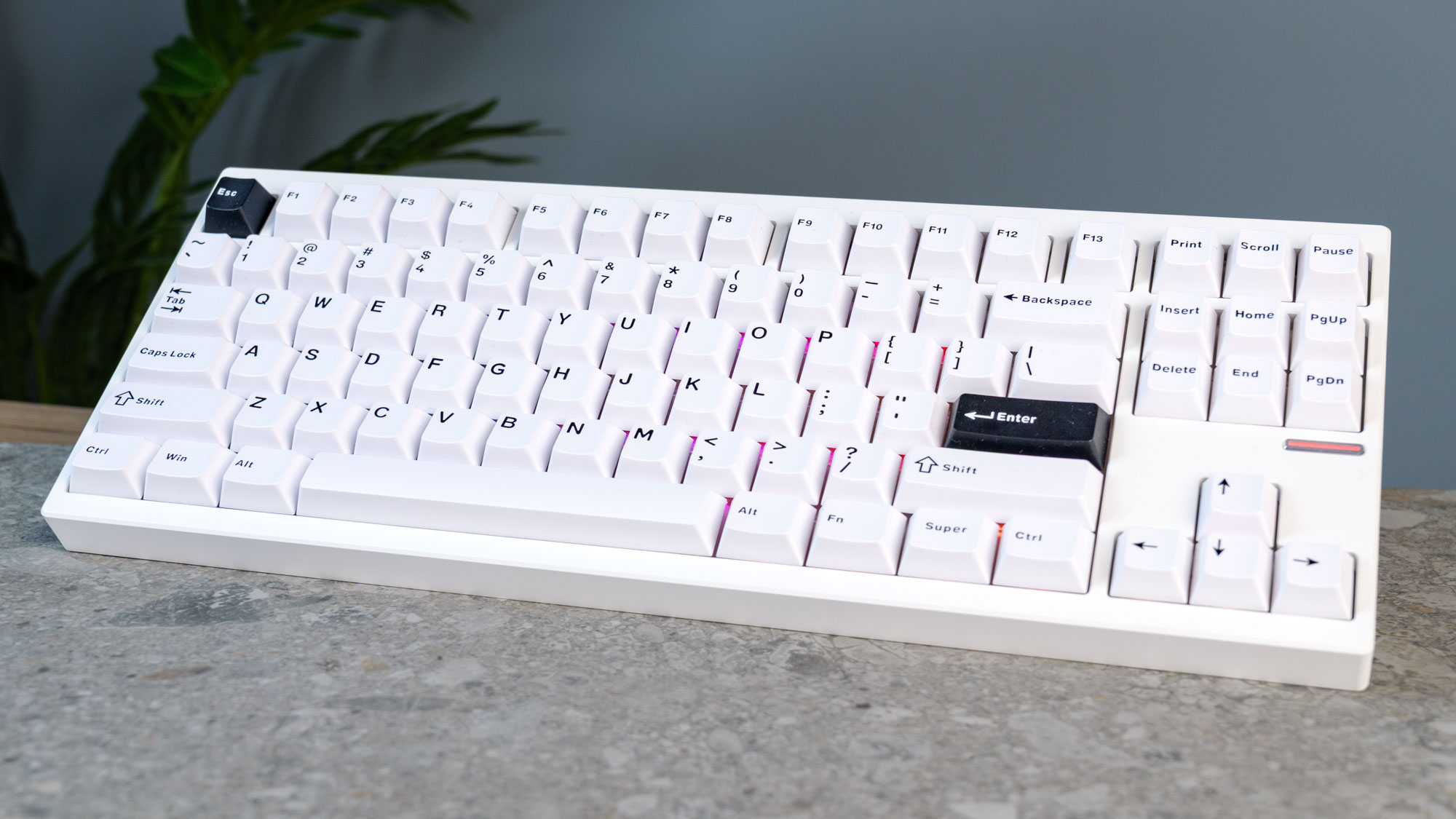
WHAT A KEYBOARD! Now I’m shouting because I want to. The MCHOSE GX87 offers as much bang for buck as I think I’ve ever seen when reviewing keyboards.
For $109, there is absolutely nothing serious to fault this board on. Sure, it’s a little mundane looking, a little firmly mounted for my taste and I’d have liked to see a tactile switch.
But good grief, what a keyboard. Exquisite build, incredible sound, strong typing and gaming, and plenty of modding potential. If you’re a mechanical keyboard enthusiast on a budget, there really isn’t any board I’d recommend more.
I’ve reviewed many keyboards over the last year, and none of them have sounded good enough to make me part with my beloved NuPhy Halo75 V2 for work. Until now.

Peter is a Senior Editor at Tom's Guide, heading up the site's Reviews team and Cameras section. As a writer, he covers topics including tech, photography, gaming, hardware, motoring and food & drink. Outside of work, he's an avid photographer, specialising in architectural and portrait photography. When he's not snapping away on his beloved Fujifilm camera, he can usually be found telling everyone about his greyhounds, riding his motorcycle, squeezing as many FPS as possible out of PC games, and perfecting his espresso shots.
You must confirm your public display name before commenting
Please logout and then login again, you will then be prompted to enter your display name.

